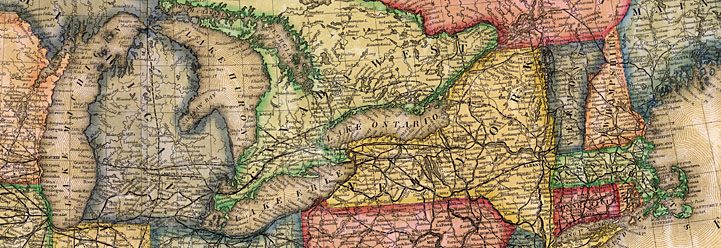|
|
 |
|
This part of western New York became famous after the Erie Canal for its history of revivalism, radicalism, communitarian experiments. It was fertile ground for new ideas to take root and spread to other parts of the country. It became a "psychic highway" for New Englanders who left the East and headed West in search of new ways of life.
|